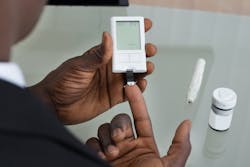CDC: More than 100 Million U.S. Adults Have Diabetes
While the rate of new diabetes cases is steady, a report released by the Centers for Disease Control and Prevention (CDC) shows that a third of adults in the United States currently are living with diabetes or prediabetes.
The National Diabetes Statistics Report found that as of 2015 30.3 million Americans are living with diagnosed diabetes and another 84.1 million have prediabetes, a condition that if left untreated leads to diabetes within five years.
“Although these findings reveal some progress in diabetes management and prevention, there are still too many Americans with diabetes and prediabetes,” said CDC Director Brenda Fitzgerald, M.D. in a statement. “More than a third of U.S. adults have prediabetes, and the majority don’t know it. Now, more than ever, we must step up our efforts to reduce the burden of this serious disease.”
The report, which is released every two years, provides information on diabetes prevalence and incidence, prediabetes, risk factors for complications, acute and long-term complications, mortality and costs in the U.S.
According to the CDC, diabetes continues to represent a growing health problem. It was the seventh leading cause of death in the U.S. in 2015, and the disease is more prevalent in some area of the country than others.
The southern and Appalachian areas of the United States had the highest rates of diagnosed diabetes and of new diabetes cases.
While it can often be managed through physical activity, diet and the appropriate use of insulin and other medications to control blood sugar levels, people with diabetes are at increased risk of serious health complications including premature death, vision loss, heart disease, stroke, kidney failure and amputation of toes, feet, or legs.
The CDC also found in its report that nearly 1 in 4 four adults living with diabetes – 7.2 million Americans – didn’t know they had the condition. Only 11.6 percent of adults with prediabetes knew they had it.
In addition, 36.6 percent of men had prediabetes while 29.3 percent of women were diagnosed. Rates were similar among women and men across racial/ethnic groups or educational levels.
The amount of education a person received correlated with a diabetes diagnosis, according to the CDC. Among U.S. adults with less than a high school education, 12.6 percent had diabetes. In contrast, only 9.5 percent of those with a high school education had diabetes and of those with more than a high school education, 7.2 percent had diabetes.
Diabetes rates varied among race. Diagnosed diabetes was higher among American Indians/Alaska Natives (15.1 percent), non-Hispanic blacks (12.7 percent) and Hispanics (12.1 percent). The report found that 8 percent of Asians and 7.4 percent of non-Hispanic whites were diagnosed.
